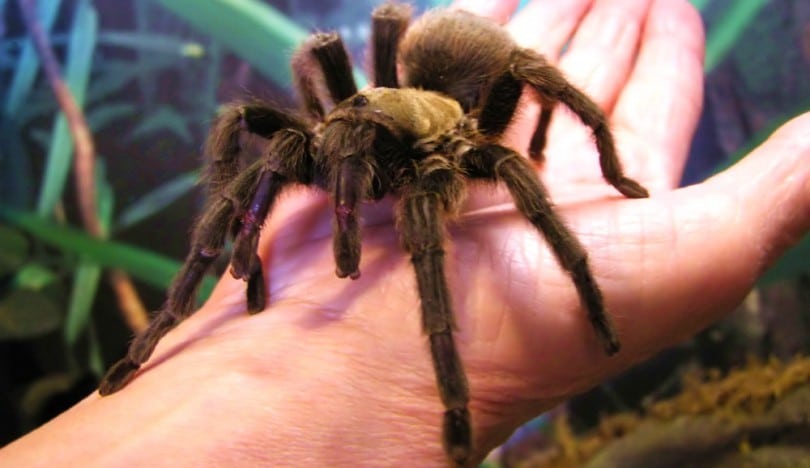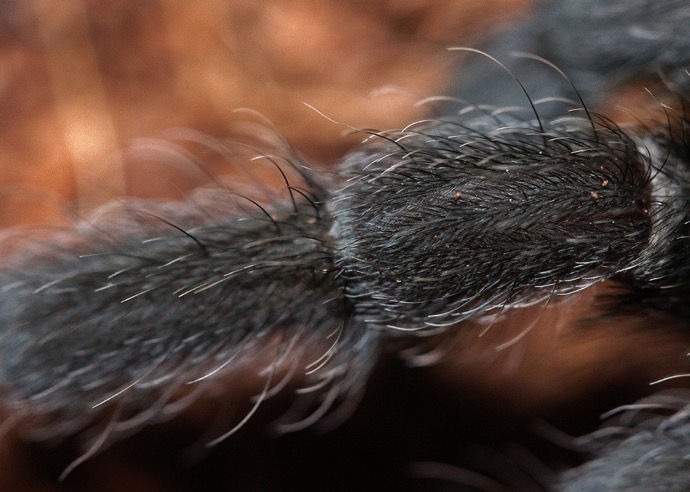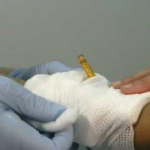How to Deal With Tarantula Bites
Tarantulas either fascinate or scare people to death. Their large size, intimidating fangs and predatory nature make them one of the most unique arachnids on the planet. They also occupy a large habit, being found in most tropical and arid areas in the world. They are generally thought to be harmless to humans, but that consensus is beginning to change as new research emerges to suggest otherwise.
Skilled Hunters
Tarantulas are generally skittish and prefer to hide under cover during the day. They are more active at night, and they can feed on a wide-range of prey. This includes birds, mice, reptiles as well as other insects and critters. They also have a venomous bite, but the venom is considered to be less toxic to humans than what bee stings produce.
Tarantulas usually move slowly and stalk pray until they are ready to pounce. They also do not build webs to the degree that other spiders do. However, they are known to set traps and trip wires that will alert them when desirable prey gets close to their nest.
Bites to Humans

Tarantula bites are incredibly painful, and it’s not hard to see why. Their large fangs can puncture skin and leave deep gouges that can swell and hurt. There are cases in which people have required hospitalization from the venom of certain species of tarantulas, and some have died as well. However, the vast majority of bites occur because the tarantula is scared or their territory is being invaded. Surprisingly, bites in the wild are rare as they prefer to remain out of sight and don’t cross paths with humans all that often. Most bites are directed toward pet owners during feeding time when fingers and hands get a little too close to comfort.
However, there has been an increase in bites that have led to hospitalizations, although only a handful of cases have been life-threatening or fatal. Some bites have produced symptoms that are similar to allergic reactions to bee stings. This includes difficulty breathing and a swelling of the airway. However, some cases have reported chest pains, irregular heartbeat along with seizures.
What to do When Bit

The biggest risk to most people who get bitten by tarantulas comes from infections. Tarantula fangs produce deep puncture wounds that can be difficult to clean thoroughly in some cases. The first thing to do is wash the wound site with warm, soapy water and make sure that the soap penetrates through the skin. This will be painful, but it’s essential to disinfect the area. Hydrogen peroxide or other antiseptic treatments can also be used. Pat the area dry, apply some antibiotic ointment and place a bandage over the wound.
Swelling is also another source of discomfort, especially in the hours that follow the bite. This is caused primarily by the body reacting to the venom that is released by the tarantula. This will go away within a couple of days and the would should heal on its own without too much intervention. Adding a cold compress to the affected area will help to soothe the skin and keep swelling to a minimum.
Tarantula Hairs
The hairs on tarantulas are just as, if not more, problematic than the bites. They have barbed edges, can easily get stuck on the skin, and they contain a small amount of venom. They are also very irritating, and burning and irritation as well as the development of a rash is not uncommon. You can rinse away many of the hairs, but consider using some duct tape or a pair of tweezers to get at any that remain. You want to seek immediate medical attention if any hair gets in the eyes, mouth, inhaled or swallowed as allergic reactions can produce a range of medical problems.
Finally, if you or someone you know experiences a severe allergic reaction to a bite, seek immediate medical attention. Never wait for symptoms to subside if the victim is experiencing difficulty breathing, systemic swelling or chest pain.
Remember that your chances of being bitten by a tarantula are minimal unless you are handing one. However, they do occur in the wild, especially in desert areas from time to time. Remember not to panic, assess the situation and take appropriate action as necessary.

















